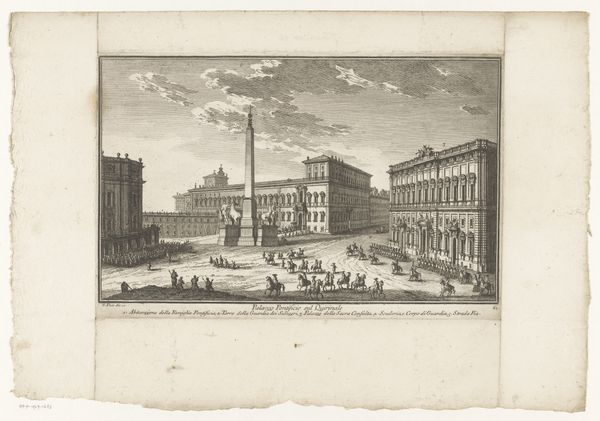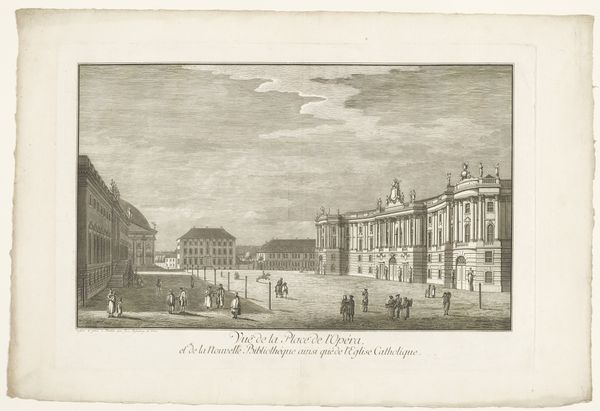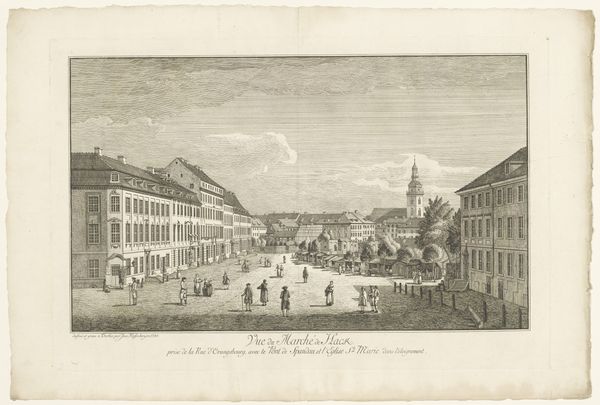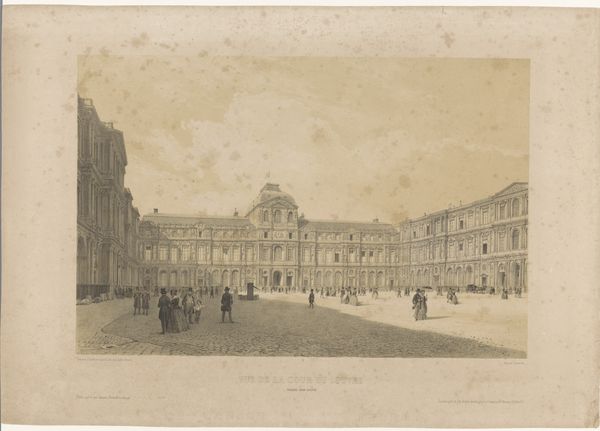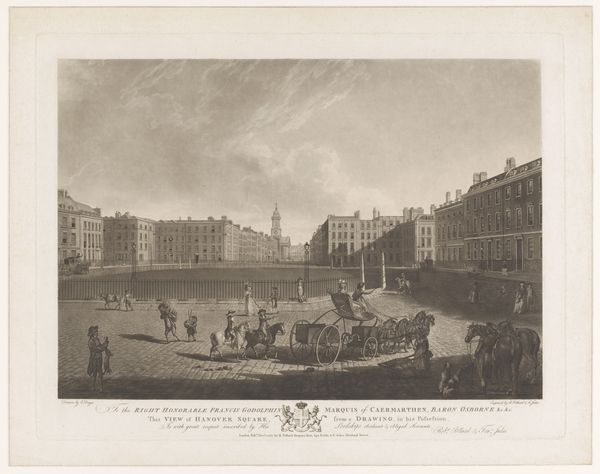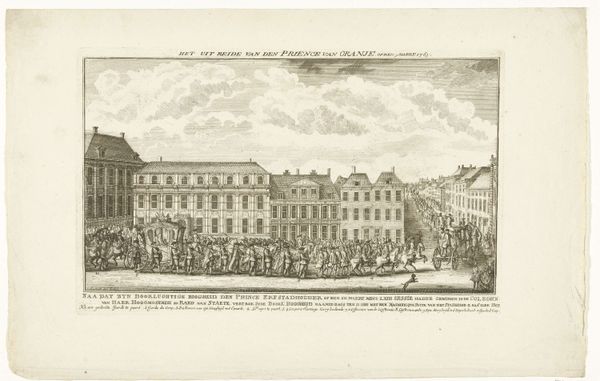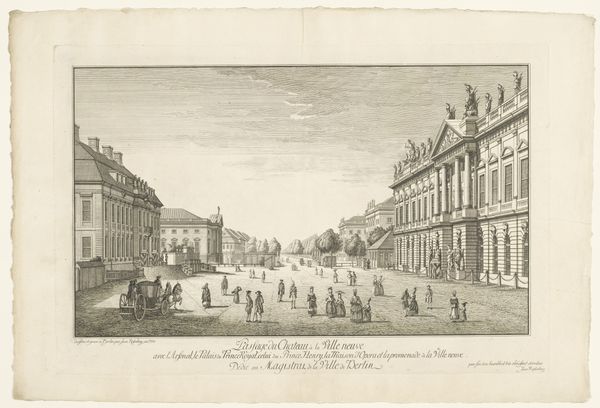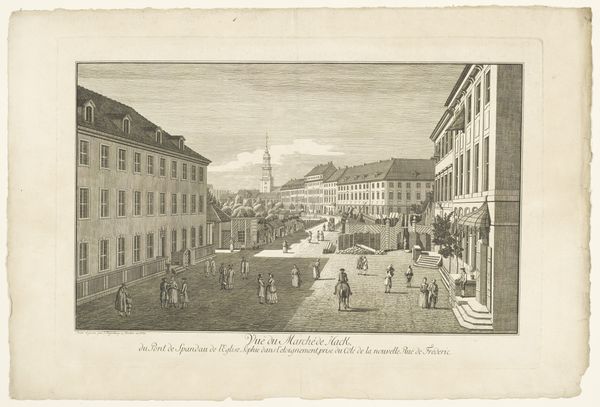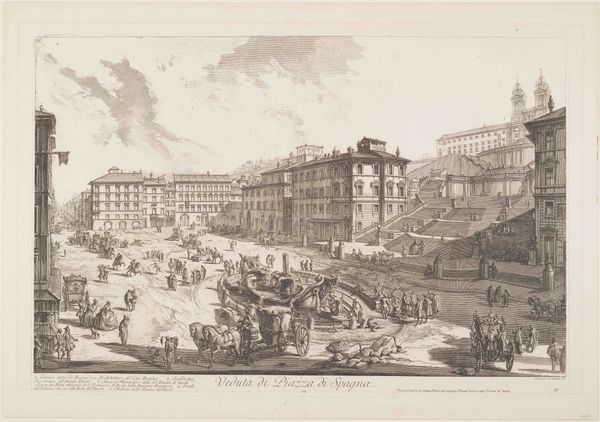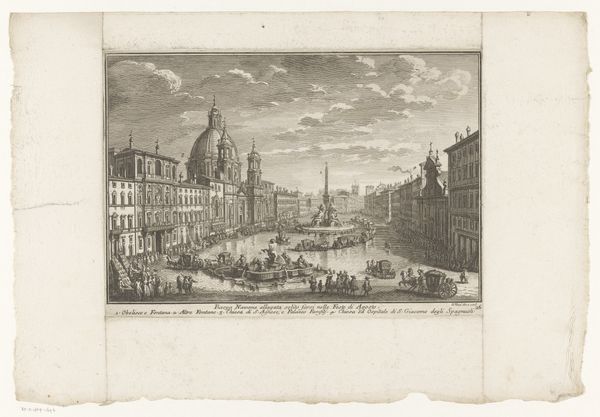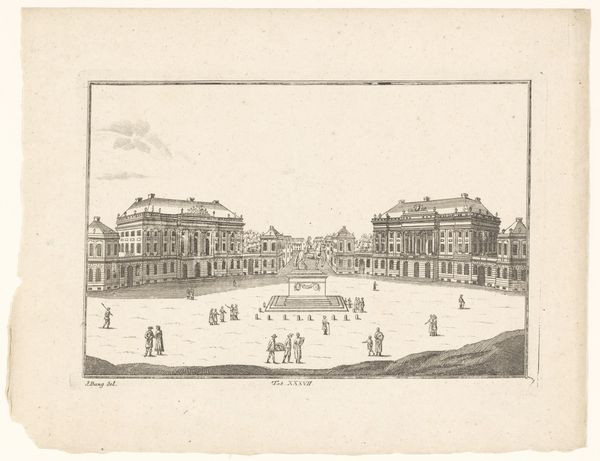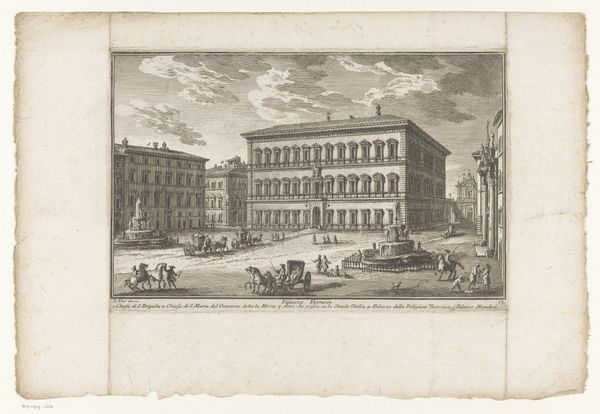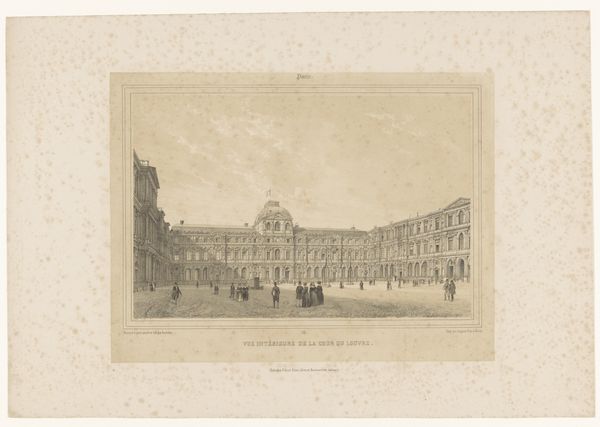
Dimensions: height 482 mm, width 709 mm
Copyright: Rijks Museum: Open Domain
Curator: Look at this cityscape, it's got a sort of austere grandeur, wouldn’t you say? Editor: Absolutely. It reminds me of stepping into a sepia-toned dream—crisp, measured, and somehow both inviting and distant. It’s entitled “View of the Schlossplatz in Berlin,” and Johann Georg Rosenberg created it in 1781. It’s a print; an engraving, actually. Curator: That crispness must come from the engraving. It captures Berlin with this curious sense of formality, right on the cusp of Neoclassicism. It gives the eye a space to wander—from the grand Schloss to the figures milling about the square. Almost staged, really, as if this is how the Prussians saw their capital, neat, respectable. What do you feel it says about urban space at the time? Editor: The composition speaks volumes about how the powerful wanted their cities to be seen. It’s no accident the palace dominates the view. Urban planning was, after all, part and parcel of statecraft. Here, Rosenberg is showing not just buildings, but the theatre of power itself, subtly reinforcing social hierarchies through spatial representation. Did common folk relate to that or simply perceive this kind of presentation as being propaganda by other means? Curator: Propaganda can be art, and vice versa. Rosenberg presents it with clarity and the sort of emotion tied up to precision. It speaks to the power, and I think more to the pride of belonging to that power in one way or the other. It is interesting to think that one could buy this sort of work, hang it up at home, and admire its lines. I can only see it as beautiful. The eye for detail is fascinating. Each tiny figure seems placed just so, you see, caught up in their tiny dramas in this perfectly arranged vista. I love this feeling about it, almost naive. Editor: I get that. While this image offers beauty and refinement, remember it’s also doing ideological work. But maybe art *should* work, even if that labor is not visible from first glance. This print becomes then, not just pretty decor but a snapshot of 18th-century aspirations, anxieties, and power dynamics. Curator: True, and perhaps, that friction is why it endures and captures us! Editor: Exactly, it’s in the visual whisper of societal influence that truly makes it a priceless artwork, to say the least.
Comments
No comments
Be the first to comment and join the conversation on the ultimate creative platform.
